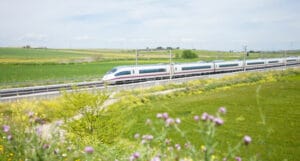With its rich tapestry of innovations, challenges, and victories, the construction industry has come a long way since the building of the first structures by ancient civilizations. Construction management is a key element in this progression, which has evolved significantly. This comprehensive journey into the history of construction management will offer insights into how this discipline was born, how it has changed, and where it may lead us in the future.
The Earliest Days of Construction Management
The concept of managing construction projects is as old as construction itself. Even during the erection of historical marvels like the Great Wall of China, construction management was in place. Though rudimentary compared to today’s standards, this early form of project oversight is a testament to the enduring need for structured planning and execution in construction.
A Brief History of Construction
The earliest known form of construction dates back to the Neolithic era, when people started creating permanent shelters. This was a time of transitioning from nomadic lifestyles to settled agricultural communities.
Historical constructions such as the pyramids in Egypt and the Great Wall of China are perfect examples of ancient construction management. Despite the absence of advanced technology, these projects required intricate planning, scheduling, resource management, and supervision — foundational elements in today’s construction project management.

Engineering Concepts and Construction Management
Civil engineering and construction management have a symbiotic relationship. Structural engineering concepts have been an integral part of every construction project since the inception of building structures. Understanding these concepts is considered essential for project managers, further highlighting the intertwined nature of these disciplines.
The Emergence of Scientific Construction Management
In the early 20th century, the scientific management movement marked a significant turning point in the history of construction project management. Spearheaded by Frederick Winslow Taylor, this approach emphasized efficiency, productivity, and the standardization of work processes. This era witnessed the first attempt at formalizing project management principles. It laid the groundwork for the codification of construction project management as we know it today, from cost management to time management and quality control.
The Evolution of the Construction Manager's Role
At this time, the function of the construction manager crystallized as an indispensable role in the triumphant completion of projects. With the increasing intricacy of construction projects, the obligations of construction managers intensified. These ranged from the evaluation of potential risks to effective communication, demonstration of leadership, and handling of stakeholder relations.
Construction Project Manager and Management Techniques
The advent of advanced management techniques revolutionized the field of construction. Techniques such as Critical Path Method (CPM) and Project Evaluation and Review Technique (PERT) were developed in the late 1950s and early 1960s, providing project managers with new tools to plan, schedule, and control projects more effectively.
Project Management Institute and the Codification of Construction Management
Founded in 1969, the Project Management Institute (PMI) played a crucial role in standardizing the methodologies and practices in project management. PMI developed the Project Management Body of Knowledge (PMBOK), which outlines the standard terminology and guidelines for project management, including construction project management.
The institute also offers the Project Management Professional (PMP) certification, recognized globally as a benchmark for project management competency.
Comparing Construction Management and Construction Project Development
Understanding the difference between project development and project management is key in construction. Project development involves creating a project from scratch — including the concept, feasibility studies, and design. In contrast, project management executes the project plan, which involves coordinating resources, managing costs, and maintaining quality and schedule control.
Association Influence and Information Dissemination
Various construction management associations worldwide have contributed to the profession’s advancement by disseminating essential project management information and promoting best practices. They provide resources, certification programs, and a platform for construction professionals to network and learn.
Future of Construction Management
In the 21st century, construction management has incorporated technology unprecedentedly, including project management software, Building Information Modeling (BIM), and even drones for site inspections.
With the advent of artificial intelligence and machine learning, the future of construction management promises to be even more technologically advanced. The evolution of construction management continues, with an increasing emphasis on sustainability, resilience, and inclusivity.

Conclusion: History Of Construction Management
The journey from building the first shelters to managing multi-billion dollar projects is a testament to human creativity, resourcefulness, and our relentless pursuit of progress. The history of construction management reflects this trajectory, highlighting the evolution of management techniques, the expanding role of the project manager, and the continual adoption of innovative tools and practices. Despite this progress, the fundamentals of construction project management remain grounded in the lessons learned from past successes and failures, serving as the cornerstone of this dynamic profession.




